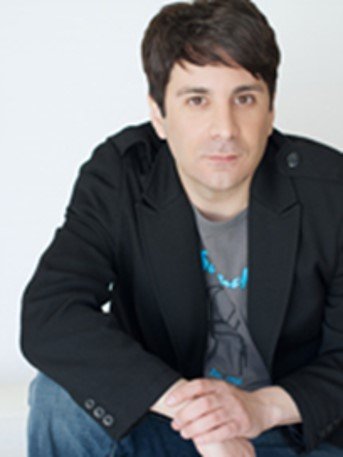By Keith Brunson
The leadership behind the workflow at Creative Media Design (CMD) is Lia Perretti. When you hire CMD, you're hiring Lia Perretti. And you're hiring a lifelong journey in the field of creative media that Lia decided upon early on.
Lia Perretti, Head of Production at Creative Media Design in New York City. https://www.cmdnyc.com/
Lia was born into the business. Her Father, Jim Perretti, was an award-winning creative director in the advertising agency business, and this translated to Lia following in her Father's footsteps. "He made my eyes open up to the world of creativity as a child, and it stuck," says Lia. While watching her Father lead and direct national commercials, Lia got the bug and still has it.
"I worked as Dad's stylist and production coordinator in the beginning, and I just loved the atmosphere and creativity that was all around me," she says. Lia was a natural in this business, and without hesitation, enrolled in the visual arts program at The School of Visual Arts https://www.sva.edu and then went on to graduate from Lynn University in Boca Raton. https://www.lynn.edu
Creative Media Design delivers voice-over work in (80) different languages and advertising services for Target, USTA, Schneider Electric, and GSK, to name a few. So, when you need a media organization to help you market your company, be it translations or production, marketing services, or what have you, Lia is your first point of contact. She's the Director of Production.
But Lia didn't just walk into CMD. Lia spent years in the ad agency business, learning how to put voice productions together. Starting in 1996, she was a production assistant at Pubicis Kaplan Thaler. So, Lia began at the bottom of the totem pole in production. She did not get special treatment because of her Father. For the uninitiated, the production coordinator is the person that is asked to do everything that others do not want to do. And that includes getting coffee and buying office supplies. Translation? Lia started at the bottom and literally "worked" her way up. That's a unique distinction for an advertising legacy. She sidestepped no job. She spent her early years devoted to the jobs that came along the way.
In 1998, Lia went to work as an assistant producer Lowe Bozell McAdams. She spent three years developing radio and television for Bank of America, The New York Times, Bausch & Lomb, and Jergens. Her contribution to the agency is hallmarked by becoming instrumental in winning the account of Jergen's skin lotion. If you are unaware, getting that skincare product as a client got Lia noticed.
Lia moved into a career at Havas worldwide, the fifth-largest agency globally, and oversaw the production of a 500-person organization. It was here that Lia got heavily involved in large-scale campaigns in film production from script to screen. From Volvo to Intel, Lia was involved in the explosion of the Blue Man Group and its contribution to pop culture.
Lia Perretti with The Blue Man Group
"That was a career highlight and serves to this day as a memorable experience that still remains a very fond memory," says Lia. "I knew this was a defining moment in my career, and we filmed in London." The commercial would air internationally and become a true hit with the television viewing public globally. "I'll never forget it."
In 2004, Lia would migrate to yet another famous ad agency, McCann Erickson. Many ad agencies in New York determine a person's production standard in advertising, and this shop is at the very top. It was there that she'd oversee major client accounts of Exxon, Kohl's, and the highly notable account of Verizon Wireless. During this period, Lia was the centerpiece of the entire production department. Practically every piece of communication that involved making the advertising product passed through Lia. This would set her up for a self-assured career, unlike any of her experience beforehand. She traveled to Australia to shoot the Kohl's account. She interfaced with the client and the technicians to bring the product to screen and set the stage for a lifetime of constant achievements.
In 2010, Lia would venture into freelance producing. Freelancing is where you invent every job you do. There is no supervision, no one to report to. You INVENT your jobs from one to the other. It's a unique period for the producer because what you create is what you become. And that's when Lia got involved with the cause of Breast Cancer and the philanthropy surrounding the disease. During this phase, Lia would get involved in the Avon Foundation for Women Breast Cancer Walk. Once again, Lia was the person that put the project together and made what the writers wrote an actual on-screen reality.
In 2019, Lia joined Creative Media Design. And as has always been the case, Lia serves as the glue to hold the entire production together. If you like the work, it's Lia's credit. Because although we often think of the life of a producer as strictly executive work, the opposite is true for Lia. She casts, oversees, communicates with the client, and delivers the end product. And all of this began because of her Father's influence. Her Dad led her into the field, and she remained in the field. It brings to the forefront the title of the popular television series from 1954 on CBS starring Robert Young, "Father Knows Best." And if you asked Lia right now, she'd affirm that show title to ring true.






























